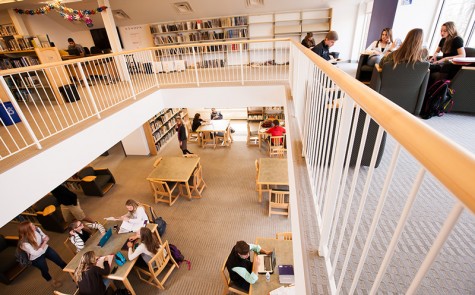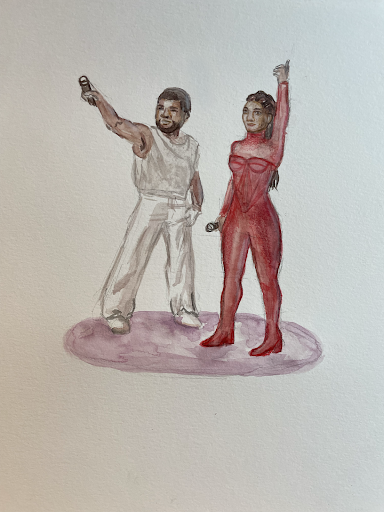PDS must use its library space more productively
August 30, 2015
Courtesy of PDS
When was the last time you checked out a book at the Upper School library? To tell the truth, I cannot remember, either. For most students, the idea of the library as a place for research and book selection has become antiquated. Technology has changed, and with it, the role of a high school library has also been altered. PDS must adapt its libraries in order to serve the changing needs of the PDS community in a more productive and effective manner.
A couple of weeks ago, on a Wednesday, during fourth period, I was feeling unusually focused and decided to go to the library to complete a few homework assignments. Of course, I had forgotten that during this block the majority of Upper School students are free. I walked into the library, only to find most of the tables occupied. Naively, I checked the second floor cubicles with no luck. I had work to complete, but no place to successfully do this.
A week earlier, a couple of other students and I ended up wandering the school for quiet study spaces after discovering the library to be full.
These experiences are unfortunately all too familiar. During popular free periods, quickly, leaving many students scrambling for a place to work. The library should be able to accommodate all students, and must strive to create more spaces for study.
These spaces should be segregated, as they are now, in order to meet the needs of students with different study habits. Students who want should be placed separately from students who would like to focus on their assignments, allowing everyone to manage their time and work as they prefer. However, the school must provide a larger area for quiet study, so students will work without distractions.
The remodeling of the library should also include spaces for collaborative study. An entire section of the library should be devoted to the student mentoring programs that PDS offers, including SiMS, CS4CS, and the Writing Center. designed with them in mind, will allow them to be more effective. This “collaborative” section should also include small rooms for group work, which would prevent students who are working together from distracting those around them. Such spaces would encourage students to learn from each other, listen to each other’s ideas, and grow together as students.
Where would the library find these additional spaces? Am I suggesting the extinction of a library that contains books? While I do believe that the modern library is very different from the book-lined ones we have come to know, I am not in favor of removing books from the library altogether. I , too, am not ready to see the bookshelves bare. However, we must begin to limit the number of books stored in the library in order to allow space to be employed in more worthwhile ways. We should start this extensive book reduction project by removing research books— encyclopedias, reference handbooks, anything and everything that we can readily are rarely used any longer. We can also easily increase our already large number of e-subscriptions. Even the books that are not readily accessible online, such as novels, are seldom checked out. Students rarely have occasion for such reading, with time-consuming homework and series of assigned novels and plays in our English classes. Who needs these books in our library any longer?
Many high schools and colleges have are facing the same challenge we are currently the library space in today’s world? Some schools have already started to adjust their libraries in order to serve their students more meaningfully. In 2013, Barnard College decided to demolish its Lehman Hall library, which they plan to replace with a new “Teaching and Learning Center.” This major project includes the reduction of Barnard’s onsite with 40,000 books being cleared out.
Dedham High School, a public school in Massachusetts, has also taken the initiative to modify its library system. They now use small laptops and Kindle devices, as well as apps that enable the download of typical library materials, such as books and periodicals, eliminating the need for massive, cluttering bookshelves that only take away precious space. We should rework our libraries, following the example of these and other innovative schools.
Although I do not consider myself old-fashioned, there is still a part of me that would be sad to see the traditional go, to see the books begin to disappear, to see the shelves allowing our library to stay one. Technology’s prevalence and the forever changing needs of the student body mean that we must modify our libraries. I understand that this transformation will not be overnight; it will take time. The long process of restructuring study spaces and reducing our mass of books may take years to complete. But we cannot wait to begin this much-needed process, as technology will continue to evolve, increasing the need for the library to change to better suit today’s needs.


















